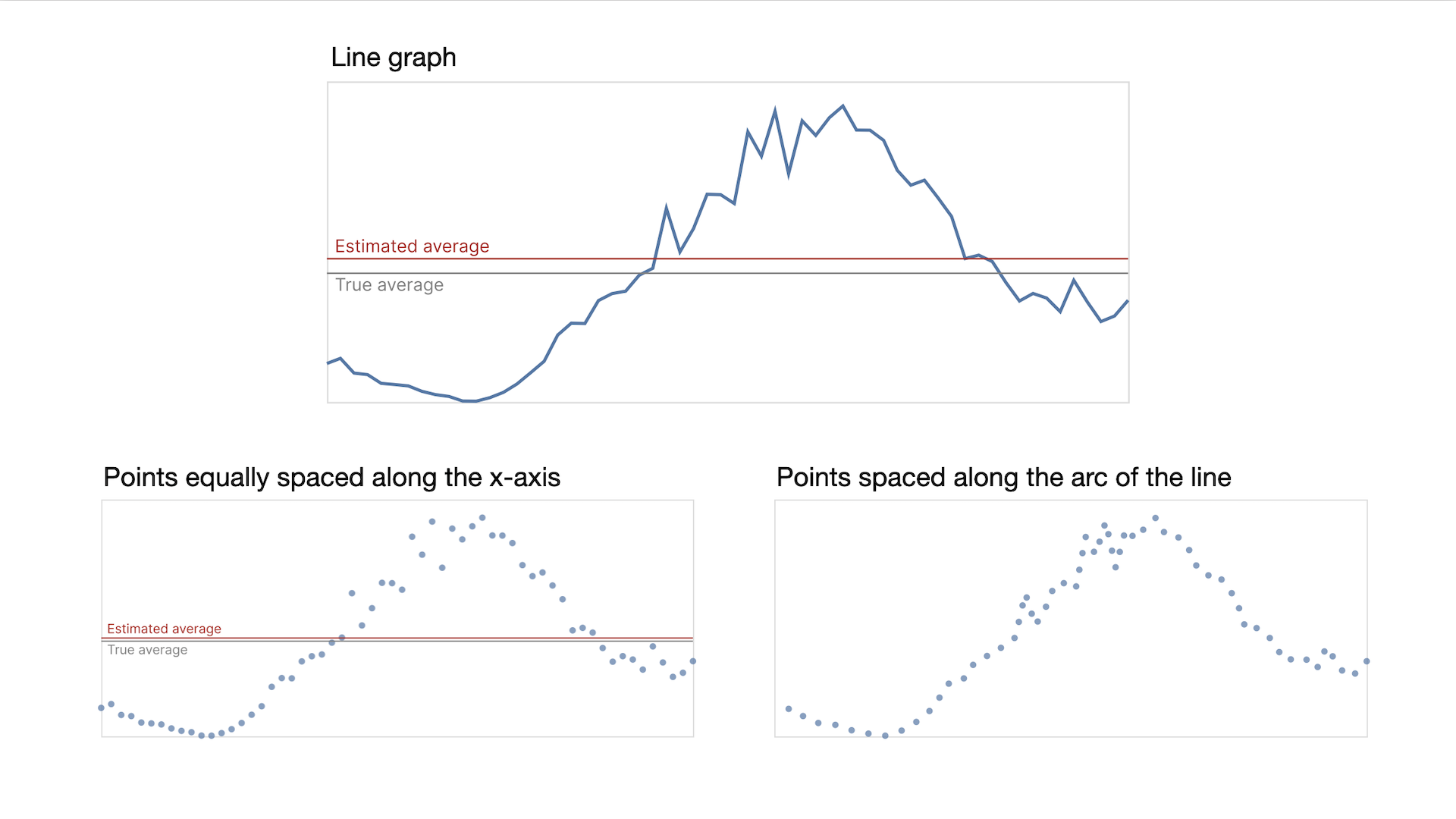Honorable Mention
Average Estimates in Line Graphs are Biased Towards Areas of Higher Variability
Dominik Moritz, Lace M. Padilla, Francis Nguyen, Steven L Franconeri
DOI: 10.1109/TVCG.2023.3326589
Room: 109
2023-10-24T23:57:00ZGMT-0600Change your timezone on the schedule page
2023-10-24T23:57:00Z

Fast forward
Full Video
Keywords
bias, lines graph, ensemble perception, average
Abstract
We investigate variability overweighting, a previously undocumented bias in line graphs, where estimates of average value are biased toward areas of higher variability in that line. We found this effect across two preregistered experiments with 140 and 420 participants. These experiments also show that the bias is reduced when using a dot encoding of the same series. We can model the bias with the average of the data series and the average of the points drawn along the line. This bias might arise because higher variability leads to stronger weighting in the average calculation, either due to the longer line segments (even though those segments contain the same number of data values) or line segments with higher variability being otherwise more visually salient. Understanding and predicting this bias is important for visualization design guidelines, recommendation systems, and tool builders, as the bias can adversely affect estimates of averages and trends.